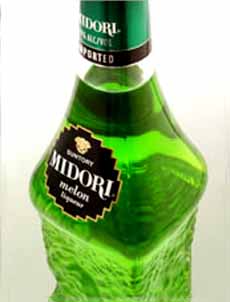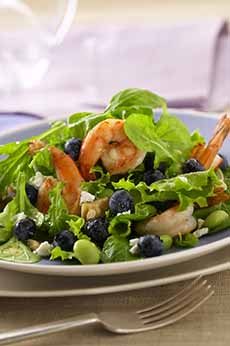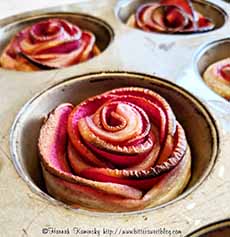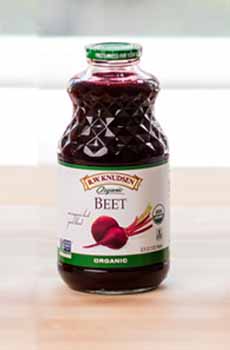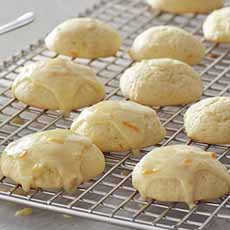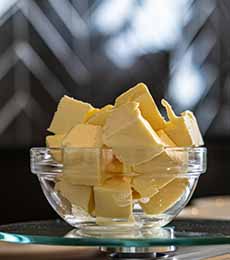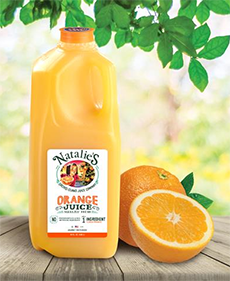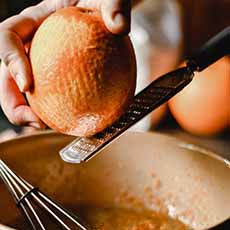|
May is National Barbecue Month, and May 16th is National Barbecue Day. What better way to celebrate than by making your own barbecue sauce. Today’s featured recipe is a Pineapple Rum urbon BBQ Sauce made with dark rum. There are additional links below to more recipes that use beer, bourbon, cola, and dark chocolate.
Barbecue sauce is the number one product we receive over the transom (i.e., unsolicited). Living in an apartment with no outdoor space to barbecue, it’s not a product we used much—until it started to arrive in droves a few years ago.
The majority of the products we taste are perfectly fine, but not special enough to write about. Most are made from ketchup or tomato paste, vinegar, a sweetener (often high fructose corn syrup—HFCS), salt, onion powder, other spices (including cayenne or another chile), molasses, and maybe some mustard.
So when we made the Pineapple Rum BBQ Sauce recipe below, our tastebuds were dazzled. But before we introduce the recipe…
HOW DO YOU SPELL BBQ? BARBECUE? BARBEQUE?
People often ask about the correct spelling: Is it barbecue, barbeque bar-b-que, or BBQ?
The answer is that barbecue and barbeque are alternative spellings, and BBQ and Bar-B-Q are abbreviations. According to Grammarist, “barbecue gained clear ascendancy in the late 19th century, and it has gone unchallenged ever since.”
We chose to use “barbecue” in THE NIBBLE because more of its professional standing with barbecue groups and publishers. But in terms of how “America” spells it, a Google search done today shows:
BBQ: 2,600,000,000
Barbecue: 685,000,000
Barbeque: 272,000,000
No surprise that the easiest is the most common.
Kōloa Rum, which created the featured recipe, spells it BBQ. We honor their spelling in their recipe.
Barbecue Trivia: The word “barbecue” comes from the Haitian Arawakan word “barbakoa,” meaning “framework of sticks.” It refers to a raised wooden structure used to either sleep on or cure meat.
> The history of barbecue, which dates to prehistory.
> See the different types (styles) of barbecue sauce, below.
>There are more barbecue sauce recipes, below.
RECIPE: PINEAPPLE RUM BBQ SAUCE
The dark rum used in this recipe has notes of vanilla, dark chocolate, and espresso, making it a delicious sipping rum. You can also pour it over ice cream.
Dark rum, also called black rum, is aged after distilling, typically in charred oak or barrels, for three to five years. Aging in wood creates a darker color and bolder flavor. The longer the aging, the darker the color and the more intense the flavor.
(Caveat: faux dark rum can be made by the addition of molasses, burnt sugar, or caramel.)
Kolōa Rum Company’s Rum & Pineapple BBQ Sauce is a real treat. The dark rum and fresh pineapple create a delicious, complex, superior flavor.
Once you see how easy it is to make barbecue sauce, you may never buy another bottle.
For more Kōloa rum recipes, visit KololaRum.com.
Ingredients
1/4 cup Kōloa Dark Rum (or substitute)
1/2 cup fresh pineapple
3/4 cup Ketchup
1/2 tablespoon mustard
1 clove garlic
2 tablespoons Worcestershire Sauce
1 tablespoon vinegar
1/2 teaspoon salt
1 tablespoon maple syrup
1/3 cup water
Preparation
1. MIX all ingredients in a blender and pulse to desired consistency.
2. POUR into a small saucepan and bring to boil, allowing the sauce to cook down and darken in color.
3. POUR into a jar. The sauce will keep for 3-4 days in the fridge.
DIFFERENT TYPES OF BARBECUES SAUCE
It’s that time of year when we Northerners polish the grill, buy loads of charcoal, and stock up on meat for those outdoor barbecues. And what barbecue is complete without that sweet, tangy, smoky condiment we call barbecue sauce?
Different regions developed different styles of barbecue sauce, so there’s a lot from which to choose.
Whether it’s Carolina-, Kansas City- or Texas-style or a simple mop sauce or marinade, almost every grill master has some form of barbecue sauce at hand. Here’s a quick comparison of the major barbecue sauce types. All are based on tomato paste (or in cheaper recipes, ketchup):
East Carolina-style barbecue sauce: A thin, sharp vinegar sauce seasoned with black pepper and chile pepper flakes, with little or no sugar. It penetrates the meat when used as a basting sauce; as a dipping sauce, it cuts the fat.
Kansas City-style barbecue sauce: A tomato-molasses-based sauce that is thick and sweet, seasoned with vinegar, spices, and often brown sugar or another sweetener. It sits upon the meat, rather than penetrating it.
Kentucky-style barbecue sauce: Vinegar and lemon juice join the tomato paste to provide a good acid backbone and a flavor profile that is tart, tangy, sweet, and spicy. It is a thinner sauce that can be used as a marinade, salad dressing, or dipping sauce, and is equally good with seafood and meat. Memphis-style barbecue sauce: Vinegar and onion are incorporated into the tomato paste. This style of sauce works with all types of barbecue, but is especially good on brisket or lamb.
North Carolina-style barbecue sauce: This vinegar-based barbecue sauce is the traditional sauce for pulled pork, but it works with all types of barbecue. You can also use it as a marinade or sauce for grilled seafood.
South Carolina-style mustard barbecue sauce: A barbecue sauce made of yellow mustard, vinegar, spices, and sugar. This sauce was popularized by German settlers on the coast.
Texas-style barbecue sauce: Generally made without tomato, these sauces are heavily flavored with southwestern ingredients: bell pepper, chile powder, cumin, hot chile peppers, and smoke flavors.
MORE BARBECUE SAUCE RECIPES
Chocolate Chile Barbecue Sauce
Cola Barbecue Sauce
Guinness Beer Barbecue Sauce
Harry’s Texas Barbecue Sauce & Very Hot Barbecue Sauce, with bourbon and garlic
Märzen Beer Barbecue Sauce
Plus
Barbecue Sauce Reviews
Grilling Tips
|
|
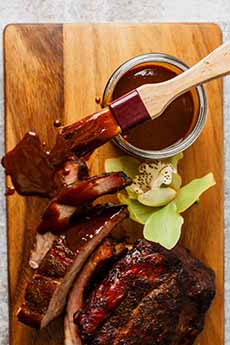
[1] Homemade barbecue sauce with pineapple and rum (photos #1 and #3 © Kōloa Rum).
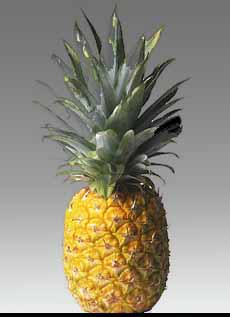
[2] The recipe uses fresh pineapple, which gives so much more flavor than canned (photo © Produce Marketing Guide).

[3] Koloa Dark Rum.
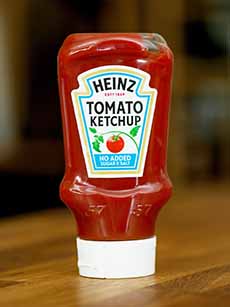
[4] Ketchup takes the plac4e of tomatoes paste in this recipe (photo © Brett Jordan | Unsplash).

[5] Mustard of choice: Dijon (photo © Maille Mustard).

[6] Worcestershire sauce adds nuances of flavor (photo © Peter Baron | CC-By-NC-2.0 License).
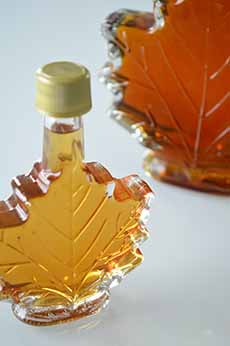
[7] Maple syrup replaces refined white sugar (photo © Nadine Primeau | Unsplash).
|
